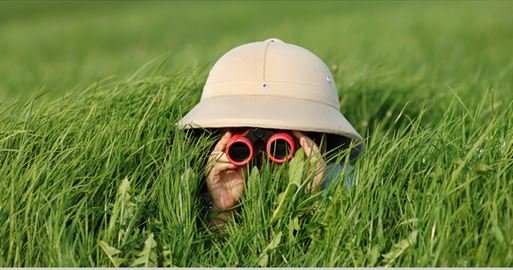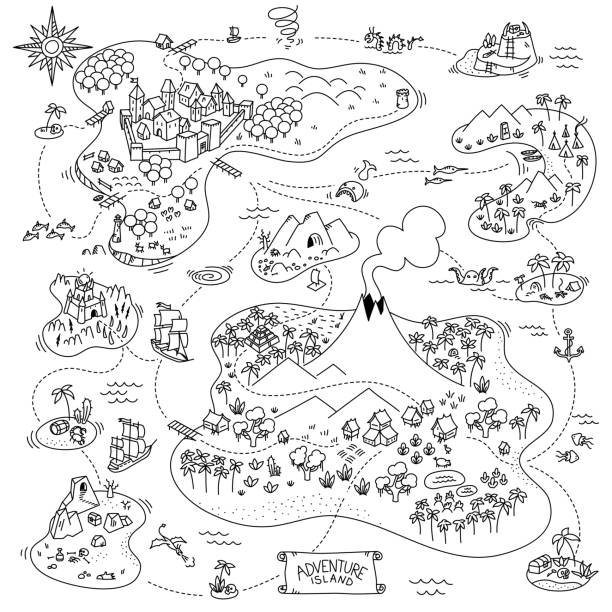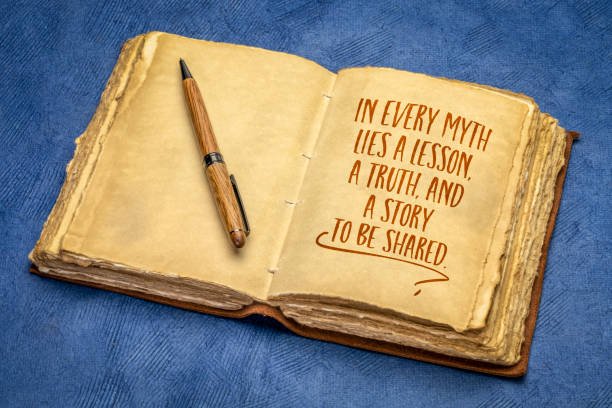“A man who writes in the wild writes his own power into existence.”
Table of Contents
Leather-Bound Clarity for the Modern Man
What if the path to becoming a stronger, more disciplined man didn’t begin with weights or battles—but with a pen in the wilderness?
Today’s world praises speed, noise, and digital clutter. But men who seek mastery know that clarity is forged in silence, solitude, and reflection. Wilderness journaling is that bridge—combining ancient warrior discipline with the forgotten art of observation and documentation.
Whether you’re trekking mountains, camping off-grid, or simply exploring a nearby forest, the habit of journaling in nature transforms your perception. You don’t just survive the wild—you command it, understand it, and reflect it in your mind.
Let’s explore 7 warrior habits that turn any leather-bound notebook into a manual of clarity, strength, and survival.
1. Field Observations: The Tactical Scout’s Eye
A warrior doesn’t just pass through the environment—he studies it. Your journal is your observation log, capturing details others miss.

Track animal movements, note changing wind directions, record the texture of the soil beneath your feet. Write down when birds fall silent—it could signal a predator nearby. These aren’t just scribbles; they’re tactical data that sharpen your situational awareness.
In the wilderness, the man who observes survives. Over time, these entries train your mind to pick up on subtleties instinctively. Observation, when written, becomes insight.
2. Survival Map Sketching: Draw to Navigate, Draw to Win
Forget GPS. Real warriors trust their eyes and their hands.
Sketching maps in your journal—crude or detailed—anchors you to the terrain. Draw landmarks, rivers, cliffs, and resource locations like edible plants or fresh water sources. This isn’t about being an artist; it’s about etching memory through visualization.

When you sketch your surroundings, you forge a mental blueprint. Even in an unfamiliar wilderness, your mind will begin to map escape routes, shelters, and strategic advantages.
Your pen becomes a compass, your page a battlefield overview.
3. Daily Reflections: Build Mental Toughness on Paper
A warrior’s greatest battlefield is his mind. Through daily journaling, you face your own thoughts, fears, and victories.
Ask yourself:
- What challenged me today?
- What did I conquer?
- Where did I hesitate?
- What did the wild teach me?
By documenting internal struggles, you convert weakness into data and reflection into strength. Over time, your journal reveals patterns of fear or doubt that can be targeted and eradicated.
This is emotional fortitude on paper. As your body endures the wild, your mind evolves through written reflection.
4. Skill Progress Logs: Mastery Requires Measurement
Mastery isn’t magic—it’s measurable.
Use your journal to log survival skills you practice. Record how long it took to start a fire, the method used, and adjustments made for success. Track your shelter-building experiments, foraging knowledge, or hunting techniques.

Each entry documents progress. Each failure becomes a lesson, not a defeat.
These logs create a personal wilderness playbook. As your skills grow, your journal becomes a testament to persistence—a concrete reminder that you’re not just wandering, you’re advancing.
5. Strategic Goal Setting: Warriors Don’t Wander Aimlessly
Entering the wild without purpose is no different than living without a mission.
In your journal, write down daily or expedition-specific goals:
- Cover X miles today.
- Learn and identify 3 new edible plants.
- Build a water filtration system from scratch.
- Sleep under the stars without a tent.
Goals focus your energy and sharpen your presence. The act of writing them declares your intent to the universe and to yourself.
Review them at the end of the day—what was achieved? What needs more effort? Strategy on paper becomes action in reality.
6. Philosophical Musings: Extract Nature’s Stoic Lessons
Every warrior is also a philosopher. Nature is the oldest teacher, offering brutal yet beautiful lessons.

As you sit by a fire or atop a ridge, write what nature whispers:
- The patience of a mountain.
- The adaptability of water.
- The persistence of roots through stone.
These reflections aren’t just poetic—they’re frameworks for living. The wild teaches stoicism, acceptance, and self-reliance, but only if you listen and document.
Soon, your journal isn’t just a survival manual—it’s a personal philosophy forged from earth, sky, and solitude.
7. Ritualistic Reviews: Know Thy Progress
Once a week, re-read your journal entries. Mark what stands out. Where have you grown? What continues to hinder you?
This weekly ritual transforms your journal from passive pages to an active mirror. Recognizing your patterns helps you evolve faster.
A warrior who reviews his battles—mental or physical—wins the next one with fewer wounds.
Essential Tools for Wilderness Journaling
To maintain this warrior practice, you need the right tools:
- Leather-bound journal: Durable, weather-resistant, and timeless.
- Weatherproof pens: Rite in the Rain pens or pencils that work when wet.
- Field notebooks: Compact, sturdy options for pockets or packs.
- Sketching tools: A soft pencil and mini sharpener for maps and illustrations.
- Waterproof case: To protect your journal from rain, mud, and mishaps.
Remember: Your tools should feel like extensions of your warrior ethos—practical, resilient, and purposeful.
Self-Discovery Through Tracking & Mapping
Tracking wildlife isn’t just about hunting—it’s about discovering yourself. When you track a deer’s path or a bird’s nesting patterns, you’re observing persistence, caution, and instinct.
Drawing these patterns in your journal creates a dialogue between your mind and the wild. You realize that every path you trace mirrors the paths within your psyche—cautious, deliberate, and strategic.
Mapping is both outward and inward. As your journal fills, so does your understanding of who you are when stripped of conveniences.
The Warrior’s Mindset: More Than Survival
Wilderness journaling is more than a hobby—it’s a declaration.
It tells the world you are not a passive wanderer, but an active participant in nature’s crucible. You don’t just exist in the wild; you learn, document, and dominate your environment mentally and physically.
This practice builds:
- Situational Awareness: By recording, you remember. By remembering, you prepare.
- Resilience: Writing about hardships helps you endure them next time.
- Focus: Goals written sharpen intent.
- Wisdom: Philosophical reflections create a compass for life beyond the wilderness.
✅ FAQ for Wilderness Journaling
- What is wilderness journaling?
Wilderness journaling is the practice of writing observations, reflections, and survival insights while immersed in nature. - Why is journaling important in the wild?
It sharpens observation skills, boosts mental clarity, and records critical survival data. - What should I write in my wilderness journal?
Document terrain details, wildlife sightings, emotional states, goals, survival lessons, and sketches. - Can journaling improve survival skills?
Yes, tracking progress and reflections help identify strengths and areas needing improvement. - How often should I journal in the wilderness?
Ideally daily, or after each significant experience or observation. - What tools are best for wilderness journaling?
A leather-bound or weatherproof notebook, durable pens, pencils, and waterproof storage. - Is sketching necessary for journaling?
Not necessary but highly recommended for maps, tracks, and landscape visualization. - How does journaling help build a warrior mindset?
It builds discipline, mental resilience, and strategic thinking through reflection and tracking growth. - What types of observations are useful to record?
Animal behavior, weather patterns, plant life, geographical landmarks, and resource locations. - Can I use digital devices instead of a journal?
While possible, analog writing fosters deeper connection, presence, and survival preparedness without reliance on technology. - How do I start journaling if I’m new to it?
Begin by writing simple observations, feelings, and goals. Don’t worry about style—focus on consistency. - Is there a specific structure for wilderness journals?
No strict structure, but sections for observations, reflections, maps, and goals work well. - What if I’m not good at drawing?
Skill isn’t essential—basic sketches for reference and navigation are sufficient. - How do warriors and explorers from history use journaling?
Historical figures like Roosevelt and Shackleton kept journals for strategy, reflection, and survival documentation. - Can journaling aid in tracking wildlife?
Absolutely—it helps remember patterns, times, and animal behaviors crucial for tracking. - What psychological benefits does wilderness journaling provide?
It enhances mindfulness, reduces stress, increases focus, and promotes emotional resilience. - How can journaling help in emergency situations?
Noted landmarks, survival tips, and resources can guide you when technology fails. - Can journaling be combined with meditation or mindfulness?
Yes, writing after moments of meditation in nature deepens self-awareness and clarity. - What’s the best time to journal during an expedition?
Early morning for intentions and evening for reflections work best. - How do I keep my journal safe in harsh conditions?
Use waterproof covers, weatherproof writing tools, and keep it secured in your pack.
Write Your Warrior Legend
The wilderness doesn’t just test your muscles; it tests your mind, your will, and your legacy. And every legacy starts with a record.
Wilderness journaling is the ancient yet forgotten craft of building strength, strategy, and soul through writing. If you’re serious about crafting a warrior mindset—not just in the wild but in life—start your journal today.
Write what you see. Write what you feel. Write what you fear. And write how you overcome.
Pick up your leather-bound journal. Enter the wild. Write your legend. Subscribe to MindGearMen.


